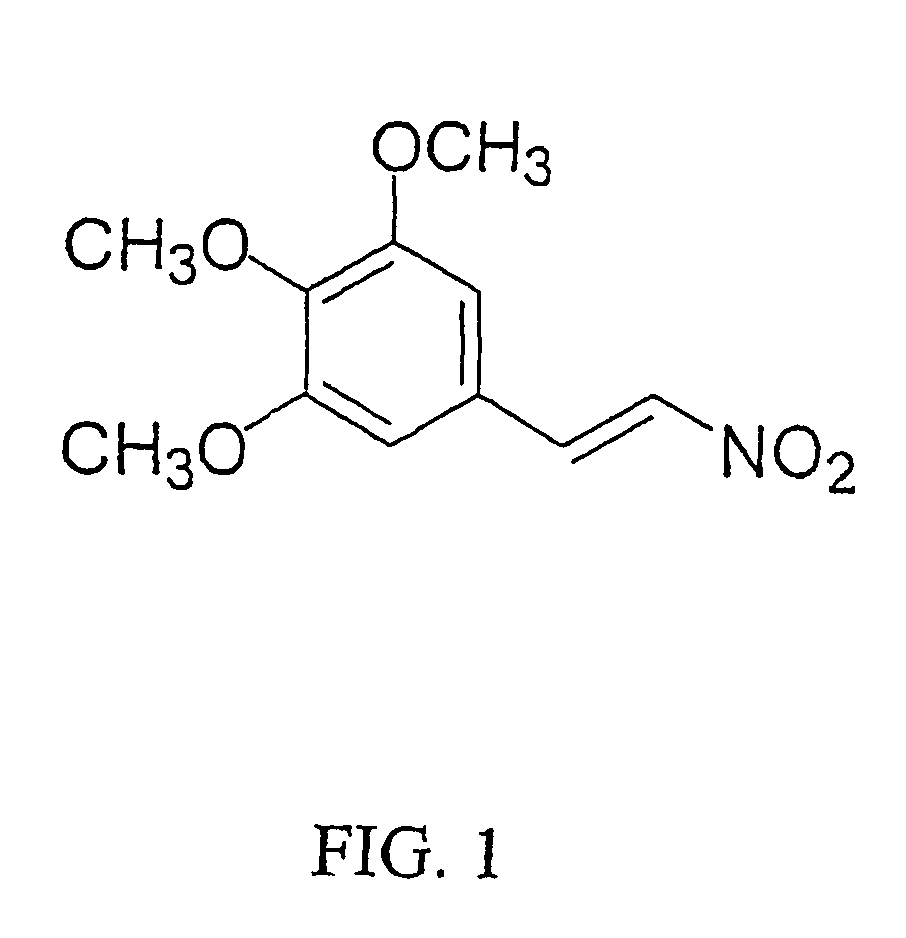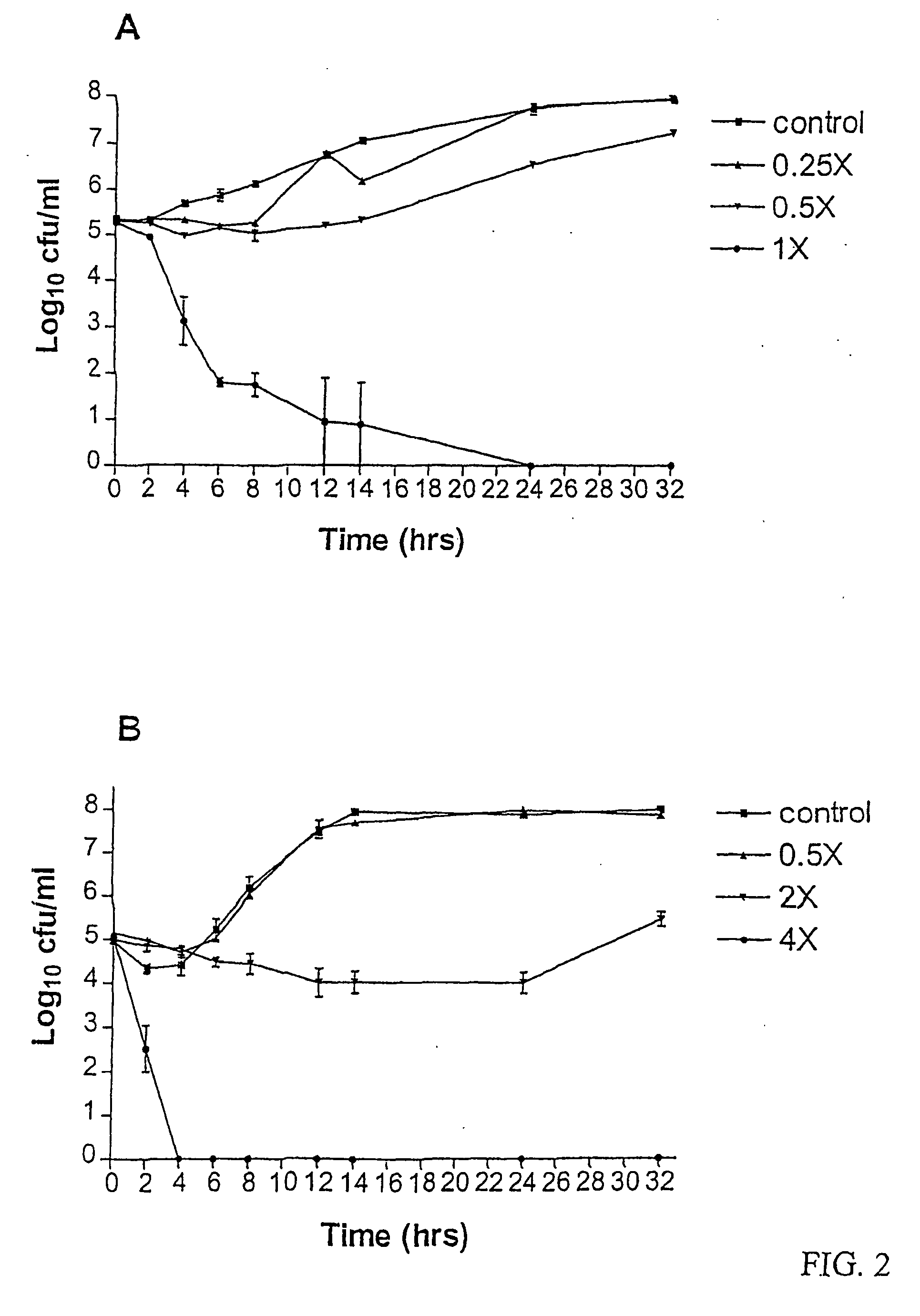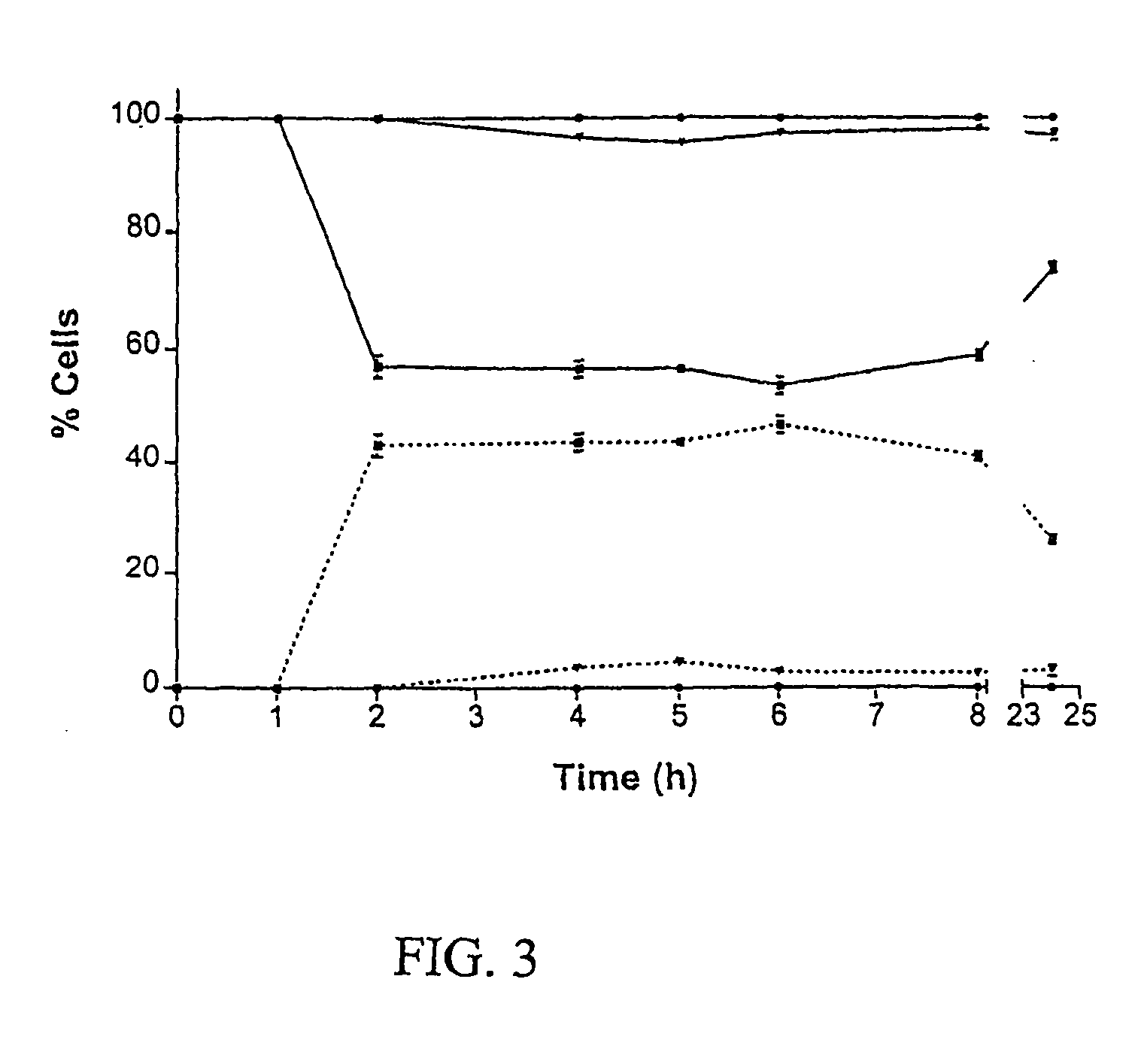Antifungal phenylethylene
- Summary
- Abstract
- Description
- Claims
- Application Information
AI Technical Summary
Benefits of technology
Problems solved by technology
Method used
Image
Examples
Embodiment Construction
[0012] The major classes of antifungal drugs available for clinical use are the macrolide polyenes, fluoropyrimidines, azoles and the allylamines / thiocarbamates [1]. Toxicity, fungistatic mechanisms, narrow activity spectra and / or drug resistance [1] limit these agents. The limited selection of effective antifungals, combined with the emergence of previously uncommon fungal pathogens [2] and an increasing population of immunocompromised patients, has resulted in a critical need for new antifungal agents. The development of compounds of novel structural class that have a fungicidal mechanism and a broad spectrum of activity will likely have the greatest impact on the current crisis.
[0013] A recent review of the antifungal actions of antineoplastic agents concluded that antineoplastic agents and their derivatives are an excellent resource for the discovery of novel antifungal targets and agents [3]. The present invention demonstrates the in vitro development of an antifungal compound...
PUM
| Property | Measurement | Unit |
|---|---|---|
| Fraction | aaaaa | aaaaa |
| Fraction | aaaaa | aaaaa |
| Temperature | aaaaa | aaaaa |
Abstract
Description
Claims
Application Information
 Login to View More
Login to View More - R&D
- Intellectual Property
- Life Sciences
- Materials
- Tech Scout
- Unparalleled Data Quality
- Higher Quality Content
- 60% Fewer Hallucinations
Browse by: Latest US Patents, China's latest patents, Technical Efficacy Thesaurus, Application Domain, Technology Topic, Popular Technical Reports.
© 2025 PatSnap. All rights reserved.Legal|Privacy policy|Modern Slavery Act Transparency Statement|Sitemap|About US| Contact US: help@patsnap.com



